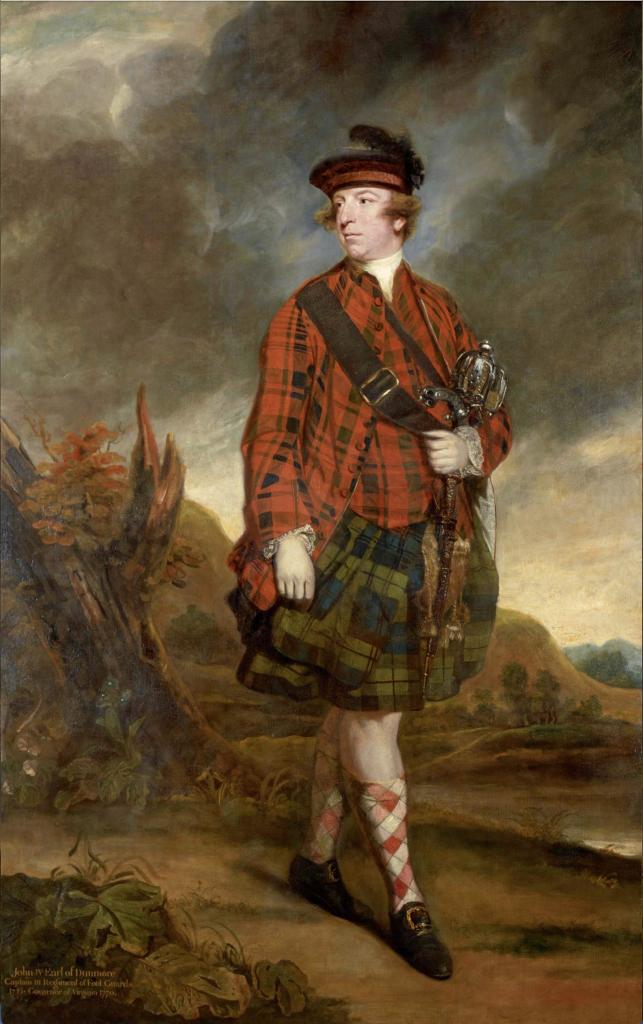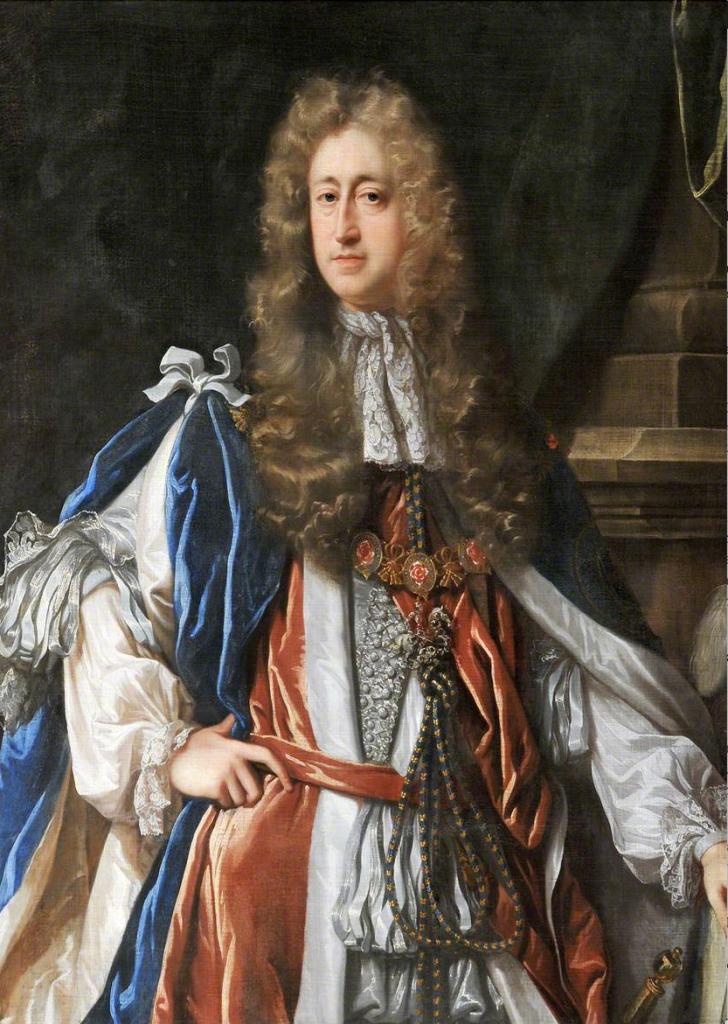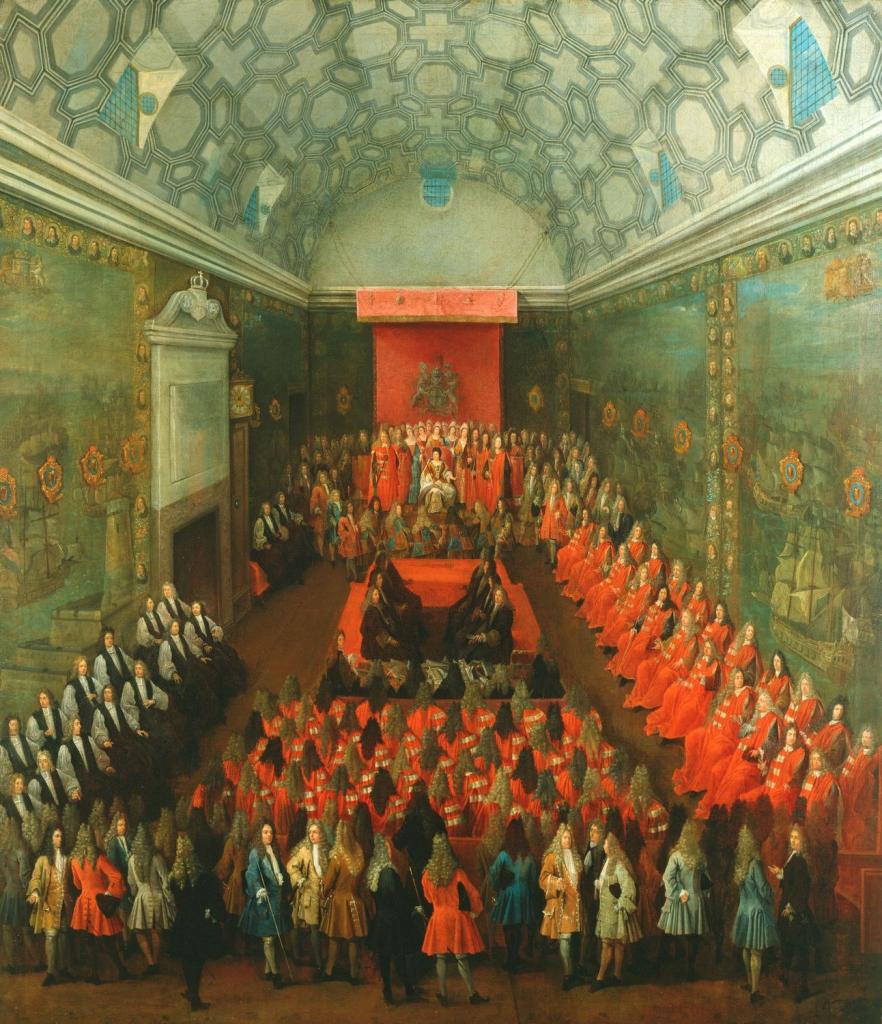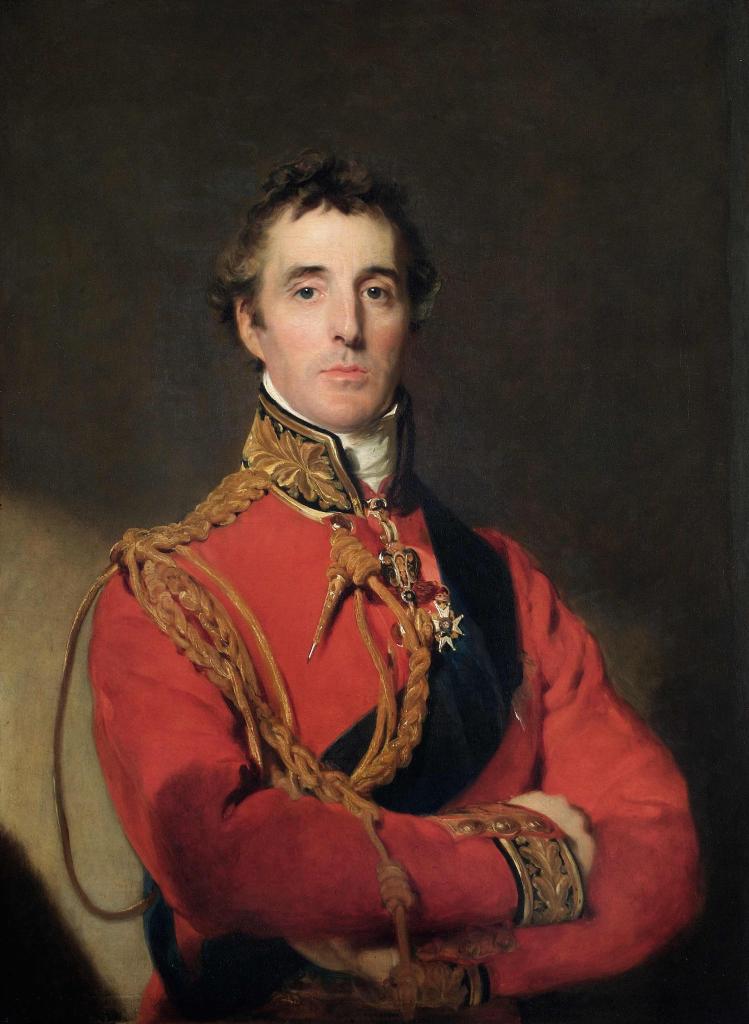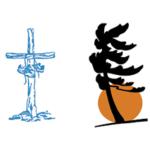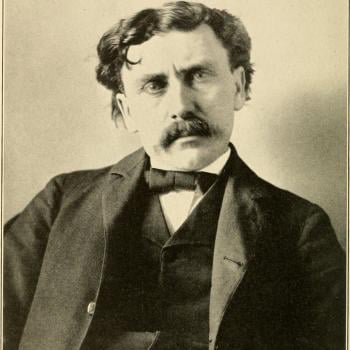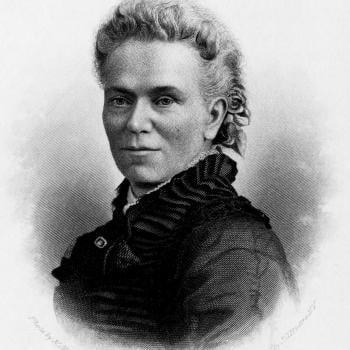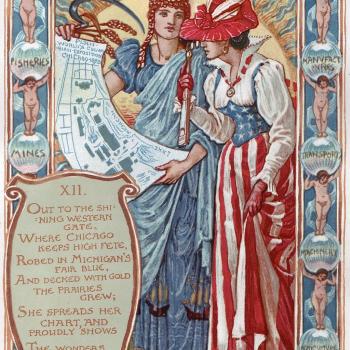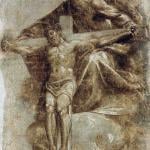Recently, I was working on a couple of totally unrelated projects relating to British history and culture – one about imperial history, the other on an early twentieth century literary theme. In both cases, I would have missed indispensable information if I did not understand the way aristocratic names, titles, and families work within that British system through the centuries – and in this instance, “British” includes colonial and imperial history, definitely extending to colonial America, and India. Once you know this stuff, it becomes second nature in research and writing. If you don’t, it looks abstruse and mysterious. Hence this blogpost, which is intended to be of use to graduate students or scholars studying anything relating to those British matters very largely defined. If you know British history, this will seem agonizingly obvious, and I apologize in advance: these aren’t the Brits you’re looking for. If you don’t already know it, please accept this as a strictly practical primer.
You might reasonably ask why anyone needs to know about aristocracy, which by definition is the world of privileged elites, the sort of topic that historians prefer to avoid these days. That’s a fair comment. But without this basic structure, you will be awash studying many, many, aspects of British affairs – politics, economics, science, industrial affairs, urban history, military affairs, colonies, empire, religion, sports, and literature. Close to everything, in fact. If you ever read classic British (or Irish) English literature, you need this stuff.
This post concerns the aristocracy in Great Britain. I am talking entirely about the British Isles, because matters were vastly different on the European Continent. I quote William D. Rubinstein: “The British aristocracy thus never became a caste, and its numbers were always remarkably small. In 1789, for instance, it is generally estimated that there were about 250,000 members of the French nobility, but only about 300 members of the British aristocracy!” Within Britain, I am discussing the aristocracy, and not the very significant landed gentry, who did not bear titles of nobility, and who raise all sorts of other questions. Had they existed in a Continental European nation, most of those English or Welsh gentry and squires would undoubtedly have counted as titled nobles or aristocrats, and often on a spectacular scale of wealth and property. But for present purposes, they were not aristocrats in their own British context, and I will leave them alone.
Lords in America
During the American Revolution, the last royal governor of Virginia was a man usually referred to as Lord Dunmore. He has attracted some recent fame because of his attempt to offer freedom to the slaves of any American in rebellion against the Crown, provided they joined British loyalist forces, “Lord Dunmore’s Ethiopian Regiment.” That action does raise complications about finding the good side in that conflict. But who or what was Lord Dunmore, beyond presumably being a generic English lord (which he actually wasn’t)? His full name was John Murray, and he was the fourth Earl of Dunmore. That title goes back to 1686, when the king wanted to reward a faithful Scottish follower called Charles Murray, who was himself the second son of an aristocrat. Charles became the first Earl of Dunmore, and passed on the title to his heirs, who maintained a record of military and administrative service right up to the twentieth century. Our Earl in the American Revolution was number four in the sequence. So to follow the family and his connections, you have to be aware of the Murray name, as well as the Dunmore title. When you find Murrays wandering around his social and political circle, you have to ask yourself whether they are his relatives.
Crucially, Dunmore was a Scottish peer, not English (see the painting that I reproduce here!). As we will see, that was an inferior category, without some of the key privileges of the English counterparts. More to the point, as a general rule, they were a lot poorer than English peers. That made Scottish (and Irish) lords very determined to seek their fortunes where they could, which is why they show up so much in British military history, and above all in the empire and the colonies.
Other American examples come to mind. Baltimore is named for Cecil Calvert, second Baron Baltimore, who held an Irish peerage. The state of Delaware takes its name from Thomas West, third Baron De La Warr (1577–1618), the first governor of the Colony of Virginia. Oddly, the Native people known as the Delaware Indians likewise commemorate that early peer. The only peer who actually took up residence on his colonial American estates was the very substantial Virginia landowner Thomas Fairfax, 6th Lord Fairfax of Cameron (1693-1781), who left his name in the city and county of Fairfax, Virginia.
Even more famous, in 1664, the British captured the Dutch city of New Amsterdam, and renamed it New York. The settlement was named not for the English city of that name, but for an individual whose family name was James Stuart, and who held the title of Duke of York. That man also held other titles, and in 1685, he would become king as James II.
The Hierarchy of Titles
Here are a couple of basic principles which apply to the English system. Over the past millennium or so, kings awarded hereditary titles to particular families, usually because some individual had performed an important political or military service. Those titles followed a strict hierarchy of five titles, from dukes at the top to marquesses, earls, viscounts, and barons – Britain had no counts, only viscounts. Nor, sorry, was there ever a Duke of Earl. One important point: a family received a title that includes the name of a place, but that says nothing necessarily about any connection between the family and the place in question. Perhaps the family owned the whole area, perhaps they had never set foot there. We just can’t know from the title alone.
Every time a family died out and the title was passed on to new successors, that is called a new creation. Also when a family gets a promotion to a new level of aristocracy.
All those offices entitled the bearer to sit in the upper House of Parliament, the House of Lords, without any kind of election, and that remained true until 1999 (no, really, it was that recent). English peers had that right, but Irish peers like Baltimore did not. A selected number of Scottish peers could serve, but only a minority (Dunmore happened to be among that favored few). Those Irish and Scottish lords could serve in the House of Commons if they chose. They could also work hard to secure English peerages in addition to their original titles, and some succeeded.
One point might not be obvious to a modern audience. Right up to very modern times, the British Parliament definitely consisted of two houses, Lords and Commons, and the House of Lords was emphatically not just an honorary thing, a symbolic talking shop. It held real power, and the right to membership was immensely valuable. Not until the early twentieth century was there a determined effort to limit the budgetary power of the Lords, and only in 1923 did a peer fail to become Prime Minister on the principle that a democratic age demanded a non-aristocratic leader. The analogy is not precise, but you might think of that earlier House of Lords as something like the modern US Senate. Would you ever try to study US political history without taking account of the Senate?
Below the peers were baronets and knights, who were not strictly aristocratic, so I will leave them aside right now. Basically, baronets were a superior category of knights, with the right to pass on their title to male heirs.
In this short piece, I’ll focus on males, but women of course had their own hierarchy of titles and dignities, of duchesses, countesses, and the rest. Women actually matter immensely in this story, because marriage was a primary means by which families rose or fell in the social pecking order. So also was being a royal mistress, and Charles II’s mistresses were amazingly successful in producing multiple aristocratic descendants.
Family and connections mattered immensely. If you really want to study Lord Dunmore, for example, you absolutely need to explore the family of his wife, and the connections and patronage networks that brought him. In 1834, Tory leader Sir Robert Peel famously protested, “Damn the Whigs! They’re all cousins.” They were too. As if the Tories were any different?
How Families Became Noble
If you look at the history of any English noble family, you can trace the typical stage of their ascent, which was often a lengthy process. They might be gentry and landowners through the Late Middle Ages, then they become rich during the sixteenth century, often because they grabbed monastic lands at the Reformation, which explains the number of aristocratic houses that still bear the name “abbey” or “priory.” Many of them served the powerful Tudor monarchy, and won favors that way. Getting the odd family member executed or expropriated along the way made surprisingly little difference to a family’s long-term fortunes. Decapitation happened.
Once a family was aristocratic, it usually aspired to the more senior rank, and the top categories were an immensely rich political prize. Dukedoms were very rare and precious. A few of those titles were strictly confined to the royal house, like the Dukedoms of York or Cambridge. The current Duke of York is better known as Prince Andrew who, um, presently has quite a few legal issues. That Andrew example is actually important, in showing how one person can have different titles at one time, and also, can work through titles during phases of his life.
The Somersets and Their Multiple Titles
In the late Middle Ages, successive kings had a number of illegitimate sons who could not aspire to the throne, but they received titles to give them some higher status. In 1514, one branch of the Somerset family became Earls of Worcester. The enormously rich fifth Earl was a devoted supporter of King Charles I during the Civil Wars of the 1640s, when he was elevated to become Marquess of Worcester. In 1682, the third Marquess became Duke of Beaufort, a title that continues today with the twelfth duke, with his seat at Badminton House. Recalling those distant and irregular royal origins, family names often include the word “Fitzroy,” meaning son of a king.
The Somersets show how a family could carry on holding several titles that they had acquired through the centuries, although these are of different value in the hierarchy. When Henry Somerset succeeded to his father’s titles in 1756, we say he became the fifth Duke of Beaufort. Technically, he was (all at the same time) the fifth Duke of Beaufort, seventh Marquess of Worcester, eleventh Earl of Worcester, and thirteenth Baron Herbert, over and above any miscellaneous offices, honors and titles. It’s like excavating through successive strata of nobility.
A young man could hold one of those lesser junior family titles until he succeeded to the full-fledged senior position: technically, these are called courtesy titles, and they are important. The eldest son of the Duke of Beaufort is known as Marquess of Worcester until he inherits the full title. These titles can seem complex, but they do follow elaborate rules (here is an example):
The Duke of Norfolk is also the Earl of Arundel and Baron Maltravers. His eldest son is therefore styled “Earl of Arundel” (without the definite article “The” which indicates a substantive title). Lord Arundel’s eldest son (should he have one during his father’s lifetime) would be styled “Lord Maltravers”. However, only the Duke of Norfolk is actually a peer; his son Lord Arundel and his hypothetical grandson Lord Maltravers are not.
Not being peers, those sons or grandsons were eligible to serve in Parliament, in the House of Commons, but they had to leave those positions if they actually inherited the real aristocratic title, when they moved up to the House of Lords. Why this seeming trivia matters so much is that you often come across people with what seem to be stray or obsolete titles, and you go crazy trying to look them up until you realize that they are courtesy titles showing someone is actually an heir in waiting, or even the heir of an heir.
Great families also pick up other ancillary titles, often with some kind of link to their family history. In the Crimean War of the 1850s, the notoriously blundering British commander was Lord Raglan, who is usually assigned main blame for the disastrous Charge of the Light Brigade. Hmm, wasn’t Raglan the name of the historic seat of the Somerset family? Indeed it was. Lord Raglan was technically Fitzroy James Henry Somerset, 1st Baron Raglan, the youngest son of that fifth Duke of Beaufort we have just encountered.
The Russells
Another example illustrates many of the key points here. Through the Middle Ages, various aristocrats were granted the title of Duke or Earl of Bedford, and in the mid-sixteenth century, the title of Earl attached to the Russell family. Russells succeeded each other through the seventeenth century, until the time of William Russell, who became Fifth Earl in 1641. His family were deeply and critically involved in revolutionary Whig politics, and were critical to overthrowing King James II in 1688. William’s son was actually executed for treason in 1683. As a reward for his loyalty to the new regime, in 1694, William added a new and glorious title to his collection when he became Duke of Bedford. The family held another title, that of Marquess of Tavistock, and the eldest son of the Duke normally bears that courtesy title until he succeeds to the full dukedom in his turn.
In the eighteenth century, the Russells were very wealthy indeed, richer than most European monarchs, and they built a magnificent house at Woburn Abbey. That line has continued to the present day, and we are now in the time of the fifteenth Duke, who was born in 1962. He is a dollar billionaire, with much of the fortune derived from real estate and a dazzling art collection built up over several centuries.
Lords in the Landscape
Let me focus on those Russell-related names. Like many great families, the Russells have literally left their mark in the landscape. The Russells were huge landowners and entrepreneurs in the building of London, and it shows. Think of Russell Square, Bedford Square, Tavistock Square, and Woburn Square. The British Museum stands on Great Russell Street. This is also an excellent map of various strands in the history of literary London. In the 1850s, Charles Dickens lived and worked in Tavistock House. In later years, remember the Bloomsbury Group of authors and artists, of whom it was said that they lived in squares and loved in triangles? Well, these were the squares they lived in.
London’s history as a world capital of finance and imperial power was a godsend to the aristocrats who controlled most of the real estate. As a Los Angeles Times report noted with some wonder back in the 1980s, “Aristocratic Families Still Own London.” That’s still true. The greatest success story was the Grosvenor family, as in Grosvenor Square, where the US embassy stands. Since 1874, the Grosvenors have been Dukes of Westminster, and the current incumbent, the Seventh Duke, is worth some twelve billion dollars. The other great London developers (Chelsea and Knightsbridge) are the family of Earl Cadogan, who is likewise a multi-billionaire. Cadogan Square in Knightsbridge is “one of the most desirable residential addresses in London and is one of the most expensive in the United Kingdom.” I quote:
The King’s Road, Cheyne Walk, Cheyne Gardens, Cadogan Square and Chelsea Square are among the estate’s most resonant addresses. It was once said that “if something doesn’t move in Chelsea, the family probably owns it.” There is also land in Scotland and Australia, and in 2009 the Cadogan Group reported net assets of £2.3 billion.
Different families had multiple economic enterprises through the centuries, and sprinkled their names widely. The Russells, for instance, were deeply involved in the reclamation of the fenland in Eastern England, where they created the landscape known as the Bedford Levels. When we read about the Industrial Revolution, we often think of heroic upstart entrepreneurs, but much of the activity came directly from the aristocratic houses. If you look at the names of major new ventures like docks or canals or ironworks or roads, they regularly take the names of the lords who sponsored them. One of the landmarks in British industrial history is the opening of the Bridgewater Canal in 1761, which has nothing whatever to do with the town of Bridgewater. It is named for Francis Egerton, who held the title of Earl of Bridgewater, and he commissioned and funded it.
The Dukes of Beaufort were hugely important in developing the Welsh coal-mining industry: see the old mining center at Beaufort itself. During that age of steam, the global capital of the coal trade was Cardiff, which had 1,800 residents in 1800, and 160,000 by 1900. All that growth originally resulted from the enterprise of one brilliant aristocratic entrepreneur, John Crichton-Stuart, second Marquess of Bute. The crucial Bute Docks bore his name, which appears in various forms all over Cardiff. When the third Marquess of Bute inherited the estate in 1848, at the age of six months, he was already (reputedly) the richest person in the world.
As the New York example suggests, British governments were lavish in scattering the names of great aristocratic families around the empire, usually because a particular incumbent held some high office. Melbourne, Australia – one of the greatest boom cities of the nineteenth century – took its name from William Lamb, 2nd Viscount Melbourne, Prime Minister at the time. Sydney recalls the British Home Secretary of the 1780s, the 1st Baron Sydney. Halifax, Nova Scotia, once a key port in the British imperial system, takes its name from the gorgeously named George Montagu-Dunk, 2nd Earl of Halifax. It has no more to do with the town of Halifax than New York does with the city of York.
I will just mention the various everyday objects that commemorate aristocratic families and estates. Yes, we could live without a cardigan or badminton… but a sandwich? That would be from John Montagu, 4th Earl of Sandwich (1718–1792).
Ten (Or More) Lords A-Leaping
I have mentioned the Somersets and Russells and their various titles, but I could choose other mighty aristos like the Dukes of Devonshire, the Cavendish family, with their palace at Chatsworth. They also own several other titles, including Marquess of Hartington and Earls of Burlington. Go to London again and check out the Burlington Arcade, the nineteenth century prototype of much later retail, including the shopping mall.
Or look at the Percys, Dukes of Northumberland; or the Howards of Norfolk. Or the Montagus of – well, various titles I have already noted here, including Halifax and Sandwich. Over time, various members of ancient families were given a variety of different titles, but they kept their family names. Here is Wikipedia again:
Sir Edward Montagu of Boughton [1488-1557], Lord Chief Justice, was the ancestor of Montagu, Duke of Montagu, Montagu, Earls and Dukes of Manchester, Montagu, Earls of Sandwich and Montagu, Earls of Halifax, as well as the extant Montagu Baronies of Kimbolton, St Neots and Beaulieu. The head of the family is the Duke of Manchester. [emphases are mine]
The Churchills, Dukes of Marlborough, had their great house at Blenheim. John Churchill was a legendary English general of the early eighteenth century, who won the Marlborough title. Over successive generations, the main title and estates passed to the eldest son, which left younger sons in a much weaker category, and in need of some kind of economic support. Commonly in landed families, the second son became an army officer, the third son joined the navy, and lesser sons (commonly dismissed as the idiots of the family) entered the clergy. The rise of the British Empire vastly expanded the range of possible alternative outlets for the energies of those ambitious younger sons. You could actually write a splendid history of British military and imperial affairs over a period of several centuries solely in terms of younger sons – especially those from Scottish and Irish noble houses.
The seventh Duke of Marlborough lived from 1822 to 1883, and his eldest son duly succeeded him as duke. That seventh Duke also had a younger son, who was known as Lord Randolph Churchill. And that Randolph had a son of his own, quite a famous individual called Winston Churchill, who aspired to being a writer and journalist before dabbling in politics. The point here is that Winston Churchill’s name proclaims his link to the great family, and he was actually born at Blenheim. But barring a singularly unlucky meteor strike on a major garden party, there was no way he was ever going to inherit the main dukedom. Even so, he always had a sense of that aristocratic affiliation, which shaped his aspirations and social circle.
By the way, Winston Churchill was offered a very senior aristocratic title at the end of the Second World War, but he declined it. That was not modesty. If he became the Duke of Omnium, say, then his son would have to inherit that title, and serve in the House of Lords, which at that point precluded him from ever being Prime Minister in his own right. So, Sir Winston remained Sir Winston till his dying day.
Titles Change, Families Continue
It pays to focus on the family names, rather than the titles. As we saw in the case of Lord Dunmore, his Murray family had already been aristocratic and held a high title even before receiving that particular new Earldom. Different branches of single aristocratic family might hold multiple unrelated titles. Driving that process, those younger sons who did not qualify for the main inheritance struggled to receive a title in their own right, and quite a few did so.
One of the Irish noble houses of the eighteenth century was the Wesley or Wellesley family, who became Earls of Mornington. The first Earl had nine children, and the oldest son would naturally succeed him as second Earl, which he did in due course. The sixth child was called Arthur, who was aristocratic by background, but had no hope of winning that title unless he went off and succeeded mightily so that he would receive a dignity in his own right. This is what Arthur Wellesley did through his military service during the wars against France, gaining a series of escalating new honors until finally in 1814 he became the Duke of Wellington. And that of course was an English title, not an Irish one. Such a glorious achievement made the old family title of Mornington look quite humble. Remember what I said about Irish younger sons?
This question of names and shifting titles matters a lot when we come to index a book. Suppose we write a book about the American Revolution, and refer to the man generally called Lord Dunmore. The problem with “Dunmore, Lord” as an index entry is that this was never an officially recognized term. At various points in his life, the man in question was variously referred to as John Murray, or Viscount Fincastle (his courtesy title), or the Earl of Dunmore. When indexing peers in any era, on any topic, you always use the person’s name, and then his titles, because the name is the one (fairly) constant in the story. In this instance, the only correct index entry would be:
Murray, John, fourth Earl of Dunmore
You might then also include a cross reference under
Dunmore, Lord: see Murray, John, fourth Earl of Dunmore
That may seem obsessive for one person, but when lots of individuals are covered, over any period of time, it is essential.
Follow the Names
Whenever you look at major figures in British history and culture, you very often see these great names, even if they do not bear the official titles, and a bit of digging will tell you how exactly they tie up to the main clans.
One of the greatest names in the history of science is Cambridge’s Cavendish Laboratory: “As of 2019, thirty Cavendish researchers have won Nobel Prizes. Notable discoveries to have occurred at the Cavendish Laboratory include the discovery of the electron, neutron, and structure of DNA.” By this point, your antennae should be stirring to trace a connection to the aristocratic Cavendishes, and yes indeed, there is one. The Lab was built in 1874 to commemorate the important scientific pioneer Henry Cavendish (1731-1810), who among other things discovered hydrogen:
His mother was Lady Anne de Grey, fourth daughter of Henry Grey, 1st Duke of Kent, and his father was Lord Charles Cavendish, the third son of William Cavendish, 2nd Duke of Devonshire….
[Henry’s] relative William Cavendish, 7th Duke of Devonshire served as Chancellor of the university and donated funds for the construction of the laboratory.
How about the philosopher Bertrand Russell? In the nineteenth century, the Sixth Duke of Bedford had a son called John, who became an important and long-serving Prime Minister as Lord John Russell. Lord John was raised to the rank of earl in his own right, so that his son qualified to become a viscount. That son became famous as a leading Victorian radical under the name of Viscount Amberley, and his wife was a founding figure of British feminism. Their son was Bertrand Russell.
Nobody Was Really Sure If He Was From The House Of Lords
Always follow the names, and see where they lead, and that principle holds good today. Do recall that peers are under no legal obligation to use their full formal names, and many use those more popular forms, sometimes making it hard to detect those noble credentials.
Remember the film This is Spinal Tap, with its idiot rock star Nigel Tufnel, whose amplifier goes all the way up to eleven? Nigel was played by Christopher Guest, the maker of several brilliant mockumentaries. He is also the husband of Jamie Lee Curtis. Christopher Guest is more properly referred to as the fifth (!) Baron Haden-Guest.
I might take the popular historian William Dalrymple, who has done so many outstanding books on India and the British Empire. Hmm, Dalrymple, eh? Any connection to…? I quote Wikipedia:
Dalrymple is the son of Sir Hew Hamilton-Dalrymple, 10th Baronet of North Berwick and Lady Anne-Louise Keppel, a daughter of Walter Keppel, 9th Earl of Albemarle; through this line of descent, he is the third cousin of Camilla, Queen Consort, both being great-great-grandchildren of William Keppel, 7th Earl of Albemarle.
I won’t bother here discussing Phoebe Waller-Bridge, “Fleabag,” as her family just take us back into the (wealthy!) baronetage, so not the peerage exactly, but close. Tilda Swinton’s background is likewise exalted, particularly in a Scottish context, although not exactly aristocratic. And yes, there is a Clan Swinton.
British culture and politics are even more aristocratic than they might initially seem to be, and different eras vary in how explicitly they acknowledge the fact. Historians and scholars of literature and the arts alike need to understand how the system worked, and still works.
A few (random) suggestions for further reading:
Andrew Adonis, Making Aristocracy Work: The Peerage And The Political System In Britain, 1884-1914 (Oxford University Press, 1993)
Mark Bence-Jones and Hugh Montgomery-Massingberd, The British Aristocracy (Constable, 1979)
Chris Bryant, “How The Aristocracy Preserved Their Power,” Guardian, September 7, 2017
Chris Bryant, Entitled: A Critical History of the British Aristocracy (Black Swan, 2018).
David Cannadine, The Decline And Fall Of The British Aristocracy (Yale University Press, 1990)
John Cannon, Aristocratic Century: The Peerage Of Eighteenth-Century England (Cambridge University Press, 1984)
Rohan McWilliam, London’s West End: Creating the Pleasure District 1800-1914 (Oxford University Press, 2020)
Peter Pagnamenta, Prairie Fever: British Aristocrats in the American West, 1830–1890 (Norton, 2012)
William D. Rubinstein, Elites and the Wealthy in Modern British History (Brighton: Harvester 1987)
Rubinstein also has a very useful short summary of relevant facts here.
For Lord Dunmore, see James Corbett David, Dunmore’s New World: The Extraordinary Life of a Royal Governor in Revolutionary America—with Jacobites, Counterfeiters, Land Schemes, Shipwrecks, Scalping, Indian Politics, Runaway Slaves, and Two Illegal Royal Weddings (University of Virginia Press, 2013). Now THAT is a title.
In the present New Yorker, Maya Jasanoff has a highly relevant piece on the vital role of family and dynastic connections throughout history, under the title “The History of Nepo Babies Is the History of Humanity.” This is a review of Simon Sebag Montefiore’s ambitious recent book The World: A Family History of Humanity.


